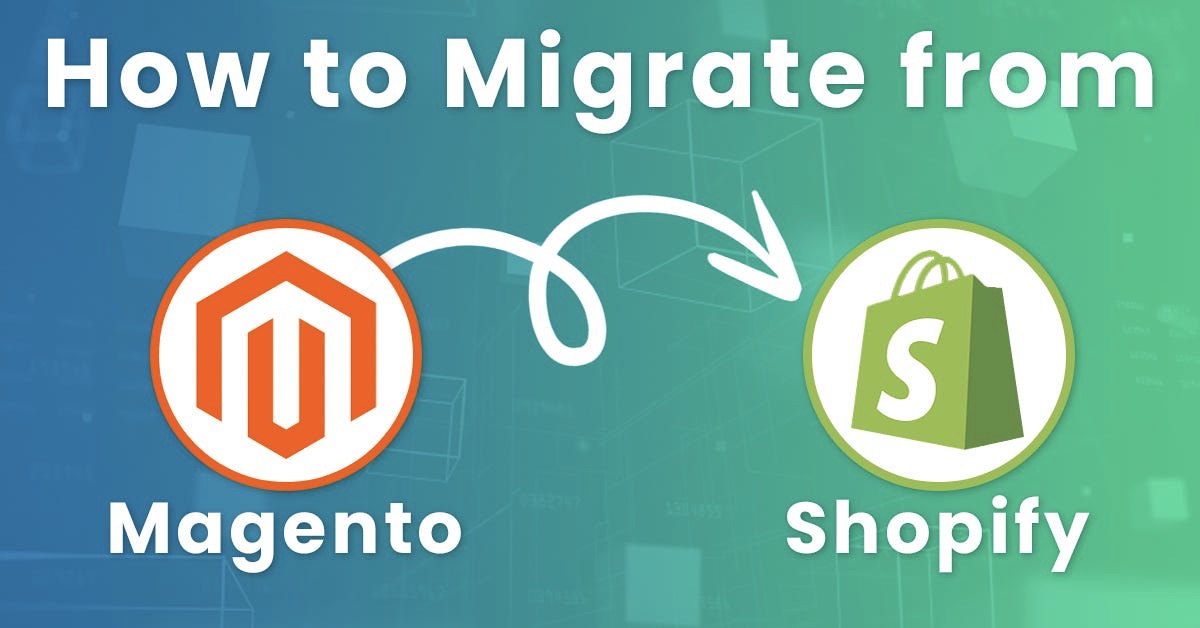E-commerce companies adapt to the online market’s expectations. Online business operators must adapt and optimize their platforms as technology and client tastes change. Many e-commerce entrepreneurs explore switching from Magento to Shopify. The transfer process may transform your organization by leveraging Shopify’s user-friendly interface, powerful functionality, and better scalability. We will coach you through Magento to Shopify migration in this complete tutorial.

Why Migrate from Magento to Shopify?
Both Magento and Shopify are strong e-commerce systems, but each offers certain advantages. Shopify is well regarded for being straightforward and user-friendly, making it a great option for startups and small to medium-sized companies. However, due to its great level of customisation and scalability, Magento is better suited for larger businesses.
Steps to Migrate from Magento to Shopify:
The process of switching from Magento to Shopify is organized and requires careful planning and execution. Here is a step-by-step manual to assist you with the migration procedure.
1. Preparation for Migration
Take the following proactive measures before beginning the migration process:
- Backup Your Data: Ensure you have a thorough backup of all the data from your Magento store, including the items, clients, orders, and other crucial details.
- Review the extensions and customizations you are using on your Magento shop. Make a list of all the extensions, plugins, and customizations you are using. Identify whether equivalent features are offered by the Shopify platform or if you need to look into other options.
- Choose a Shopify Plan: Decide which Shopify plan best fits your needs and financial constraints as a business.
2. Data Migration
To assist you with transferring your data from Magento to Shopify, the following tools and services are available:
- Manual data entry assures accuracy while being time-consuming for your product, customer, and order information.
- The CSV Import function in Shopify makes data transfer easier by allowing you to upload large quantities of data at once.
- Apps for Data movement: The Shopify App Store has a number of third-party apps that can help with data movement. Choose the one that best meets your needs after evaluating them.
3. Choosing a theme and personalizing it:
Shopify provides a huge selection of well-created themes. Select a theme that supports your brand and alter it to suit your preferences for design.
4. Product Configuration:
Recreate your Shopify product listings:
- High-quality product photos and in-depth product descriptions should be uploaded for each item.
- Configure product variations, including size, color, and number.
- Establishing product pricing and controlling inventory levels.
5. Migration of design and content
Transfer all of the pages, blog posts, and photos from your website to Shopify. Copy your Magento site’s design and organization as closely as you can.
6. Shipping and payment gateways:
Set up Shopify with your selected payment and delivery options. Make sure that your consumers can place orders and finish transactions with ease.
7. Testing:
Make sure all features and capabilities in your Shopify store are operating as intended by giving them a thorough test run. Test the navigation, product search, payment gateways, and checkout procedure.
8. Migration of domains:
Direct traffic from your domain to your new Shopify store. To guarantee that visitors are delivered to your Shopify site, update DNS records.
9. Migration of SEO:
Implement 301 redirects from your Magento URLs to the matching Shopify URLs to retain your search engine results. To improve the SEO of your website, update the headers, descriptions, and meta tags.
10. Post-Migration and Launch Tasks:
Launch your new website formally as soon as you are sure your Shopify store is ready. Keep an eye on how it performs and deal with any potential problems.
Conclusion
For your online store, switching from Magento to Shopify might be a game-changer. You can help your consumers have a wonderful buying experience by utilizing Shopify’s user-friendly interface, robust app ecosystem, and responsive design.
You may assure a smooth and successful relocation process by carefully following this comprehensive guide, freeing up your time to concentrate on expanding your business and enhancing your online presence.
Just keep in mind that careful preparation, exhaustive testing, and close attention to detail are essential for a successful transfer that realizes your e-commerce vision on the Shopify platform.
Interesting Related Article: “Magento vs Shopify“

